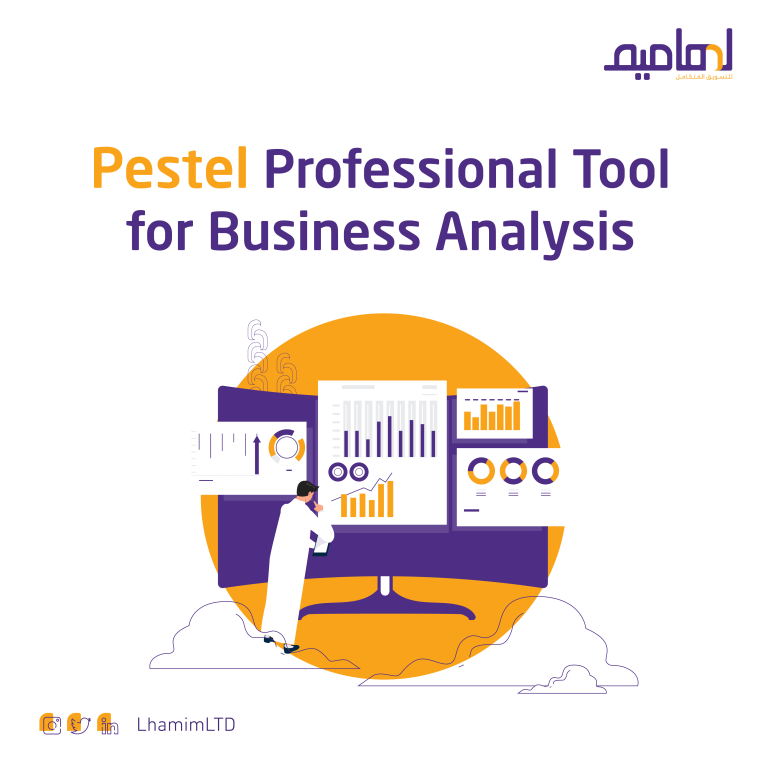PESTEL Business Analysis Tool is used to analyze and monitor the external marketing environmental factors that affect the organization. Changes in the business environment can create great opportunities for your organization as well as cause significant threats.
For example, opportunities can come from new technologies that help you reach new customers, new funding flows that allow you to invest in better equipment, and changing government policies that open up new markets.
Threats can include deregulation that exposes you to intense competition. market downturns or increases in interest rates, which can cause problems if your company is heavily indebted.
Are you looking to get PESTEL analysis done for your business? Through this article, you can learn what PESTEL Business Analysis Tool is, the seven steps on how to perform it, and the importance of PESTEL analysis in marketing, and understand each of the PESTEL factors.

What is PESTEL analysis?
It is a marketing concept used as a tool or framework for identifying and analyzing the factors of the macro environment (the external marketing environment) that may affect the performance of the organization.
What is PESTEL?
The word PESTEL is an acronym that refers to the basic factors affecting the economy, namely: Politics, Economics, Social, Technology, Environmental and Legal. Over time, the framework has been expanded to add more ethical, demographic, multicultural, and environmental factors.
The following questions are good examples of PESTEL Business Analysis Tool:
– What is the importance of culture in the market for this business, and what are its factors?
– List the technological innovations that can emerge, and how could they affect us?
– What is the political situation that governs this sector, and how will it change in the future?
How to do PESTEL analysis?
To conduct a PESTEL analysis, and apply it in a business plan successfully, you must understand its factors:
– Political factors:these factors determine how and to what extent government affects the economy or a particular business sector. Including any government decision, political stability or instability, fiscal policy, tax policy, foreign trade policy, trade restrictions, environmental law, etc. The government has an impact on infrastructure, education, health, and other regulations, which can affect the business environment significantly.

– Economic factors: are the elements of the economy’s performance that affect the business directly and indirectly. These factors can have a lasting impact on the business, which could also affect it in the future as well.These factors include inflation rates, economic growth, exchange rates, supply and demand models, interest rates, disposable income for consumers, foreign direct investment, and unemployment rates. This can directly affect how the company sets the prices for its products or services.
– Social factors: Social factors are determied by the general environment in which the organization wants to operate. This includes demographics, culture, norms, habits, and values of the population. Other trends in demographics are age distribution, income distribution, lifestyle, health and fitness attitudes, and other cultural barriers. Therefore, this is important to a company when intending to target specific customers. Also, it helps in understanding the local workforce and work culture.
– Technological factors: Any technological innovations that can affect business operations and the market in a favorable or unfavorable way. Along with including automation, technology incentives, research and development, and the level of technological awareness in the market.
These factors can determine whether or not a company should enter the sector, invest in a particular technology, and whether a particular product or service should be launched.
Environmental factors: have only recently been introduced into PESTEL’s analysis, due to the growing environmental issues such as climate change, global warming, pollution, and the scarcity of natural resources. Thus, all the elements that affect environmental aspects such as weather, climate and biodiversity are included. It significantly harms industries operating in the tourism, agricultural and insurance sectors. More awareness is also causing many companies to change the way they operate and the type of products they manufacture. Many companies also engage in Corporate Social Responsibility (CSR) practices in this area.
Legal factors: Some of its aspects are similar to political factors, but there are some who are interested in laws centered around business such as discrimination laws, labor laws, consumer protection laws, antitrust laws, copyright and patent laws, and health and safety laws. If the business operates globally, these factors will be determined by each country in which it operates. The organization also needs to be aware of potential changes in the law and how they will affect its business.
Ethical factors: These factors were recently added to PESTEL analysis. They can help organizations decide how to act correctly and in a fair manner. Ethical factors determine the organization’s responsibilities in relation to corporate and social actions. This includes the behavior of the company and its employees at home and abroad with customers, including ethics, duties, integrity, behavior, and awareness of what is good and bad for the company, customers, and employees.

The difference between SWOT analysis and PESTEL
SWOT analysis indicates Strengths, Weaknesses, Opportunities, and Threats. Conducting this analysis helps the company to identify its strengths and weaknesses compared to its competitors. At the same time, the opportunities and threats help identify factors outside the organization that can affect its success. This analysis is required when the business is new and may have problems meeting performance standards without knowing why. Thus, it must be conducted when identifying the internal and external factors that can affect the performance of the organization.
On the other hand, PESTEL analysis should be performed when there is a need to identify factors outside the organization that can affect the business. It helps identify threats before launching the action plan and avoid steps that will lead to failure. Thus, an objective decision can be made, especially when starting a business or launching a new product or service in a new region or country.
However, before starting any business or launching a new product, it is advisable to conduct SWOT and PESTEL analyses of the strategic plan to ensure its success.
To summarize,
There are many factors that are subject to PESTEL analysis that can help determine what helps your business succeed. They vary depending on the sector in which the company operates as well as on the region in which you operate.
Through this article, we covered the definition of PESTEL analysis, along with all its factors. Also, we explained the difference between it and SWOT analysis and their roles as well.
Also, learn about the Boston Matrix and how it can help you analyze your business.
At Lhamim, we help our clients to conduct market research and analysis using different tools. You can contact us to provide these services professionally.
